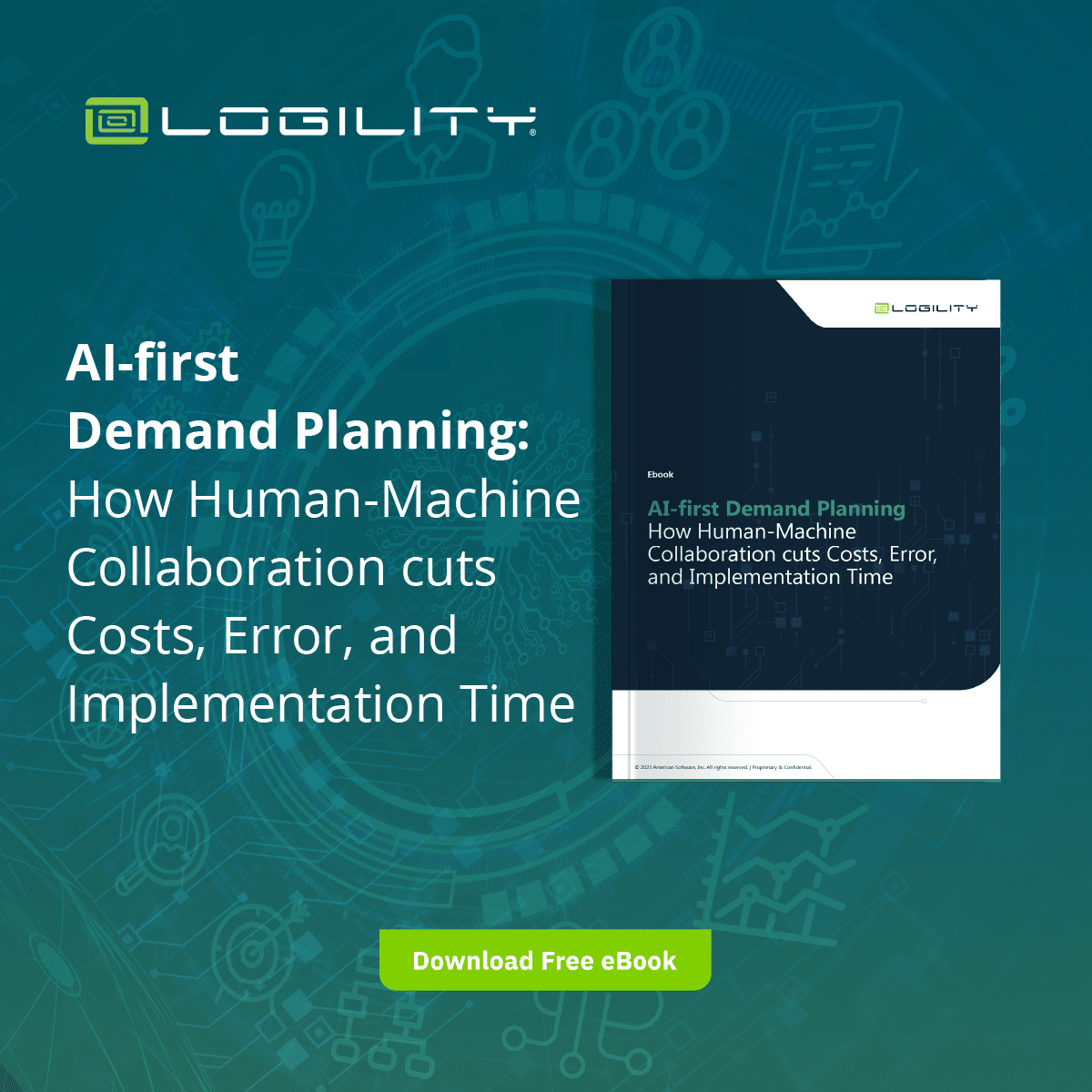
Solve for demand planning confidence, despite economic uncertainty.
Lurking beneath the relentless wave of supply chain disruptions are challenges managing supply and demand, as peaks and valleys in orders mean a longer shelf life for warehouse inventory. It’s a tug-of-war that can cause inventory carrying costs to soar.
Now, higher interest rates and material prices threaten to increase inventory carrying costs, adding to the pressure on both supply chain and finance leaders to protect margins. And as markets shift, companies must find new ways to quickly reduce costs everywhere they can, and ultimately do more with less.
Accurate, long-term forecasting is crucial to efficient supply chain management and driving down costs. But supply chain professionals today require the means to understand short-term demand to help make faster decisions based on what happened days – or even hours – ago. And this can’t be done manually with high volumes of SKUs and vendors in the mix, combined with the complexities of global trade.
Demand sensing – a methodology using artificial intelligence (AI) to improve near-future forecasts – leverages up-to-the-minute data to optimize inventory and improve customer service levels by reducing the latency between planning decisions and the most current activity within your supply chain.
Going Beyond the Traditional Paradigm for Demand Forecasting
Traditional demand forecasting relies on historical sales data that is often sufficient for mid- and long-term planning horizons but is less accurate when it comes to short-term planning. Using machine learning (ML) and natural language processing (NLP) capabilities, demand sensing AI can incorporate a much broader range of demand signals and very current supply chain data, creating the most accurate possible daily forecasts to respond to real-world events.
By applying demand sensing technology, your company can progress toward inventory management that lowers carrying costs and improves the responsiveness of your supply chain. Take, for example, Nike. By implementing demand sensing using real-time data and analytics, they improved supply chain speed and flexibility, and margins are getting a boost as well.
How Artificial Intelligence Helps Navigate Supply Chain Disruption and Gives You a Competitive Edge
Dealing with supply and demand fluctuations is challenging. Stockpiling inventory is costly, and the pandemic, wars, political tensions, and inflation have rendered historical data ineffective (along with your spreadsheets). World-class organizations are applying supply chain demand sensing AI, and here’s why.
Ensure you have a clear view of market trends and potential risks. Organizations today must have a clear view of the most current trends so they can adjust forecasting and product development to match. They need early warnings of potential product or service issues. In short, demand sensing helps you adjust quickly to unpredictable market needs with optimized inventory.
Understand your current buyer behavior to rapidly respond to demand spikes. Your customers have more choices than ever when it comes to what they buy and whom they buy it from. Along with the product they want, they expect personalized and responsive service. By leveraging near real-time data, your business will be better able to meet your customers’ needs. Demand sensing technology provides the means to truly analyze current demand signals, reduce signal latency across the supply chain and improve response times.
Establish better supply chain visibility so you can improve service and product offerings for competitive advantage. What kind of visibility will add value to your business? You need to be able to see across events and promotions. You need the ability to evaluate external factors such as weather patterns, geopolitics, inflation – even social media sentiment – to improve forecast accuracy. You need to gain insight into competitive positioning and improve service and product offerings. And you need a single platform to service these needs.
Improve Forecast Accuracy with a Broader Range of Demand Signals
- Begin with granular, historical data
Analyze sell-in demand data but use a shorter time horizon and factor in shipping history.
- Then incorporate every other piece of data
This includes customer orders, consolidated POS information, and channel data, including your social media. This can work as an early warning system for future disruptions as well as predicting trends.
- Add external data sources
One of the things that makes demand sensing so accurate is that it includes data points that aren’t included in traditional forecasting. Depending on what’s going on in the world at the time, explore adding data that includes:
- Macroeconomic factors, including a country’s GDP, the stock market, employment data, inflation, the geopolitical climate, and so on. All these things can affect demand.
- Competitor data such as promotional discounts and stockouts. This type of information lets you adjust what you offer to gain a competitive edge.
- Weather data may seem an odd thing to include, but if your sales are seasonal, short-term weather changes can impact demand and sales.
Incorporating data that reflects the current realities of your supply chain, including a broader range of demand signals, improves your speed and agility in responding to supply chain disruptions.
AI-First Demand Planning eBook
Learn “How Human-Machine Collaboration Cuts Costs, Error, and Implementation Time” in this free eBook.
Free eBookThe Logility® Digital Supply Chain Platform Offers Demand Sensing Technology
Demand sensing uses artificial intelligence to take market-based demand data and translates it into information you can use to improve short-term forecast accuracy by 30% or more compared to traditional methods of time-series forecasting. This means faster demand response times, elevated customer service levels, balanced inventory, and improved profitability.
With Logility’s digital supply chain platform, you have the technology you need to craft a modern, data-driven, and managed supply chain network with all the benefits it brings.
From integrated business planning to demand and supply planning and optimization to vendor management and the advanced analytics you need, we’ll deliver a digital, sustainable supply chain that powers the resilient enterprise. Hone your competitive edge and overcome any disruption. Your supply chain won’t fix itself, and there’s no time to waste. Let’s get started.



